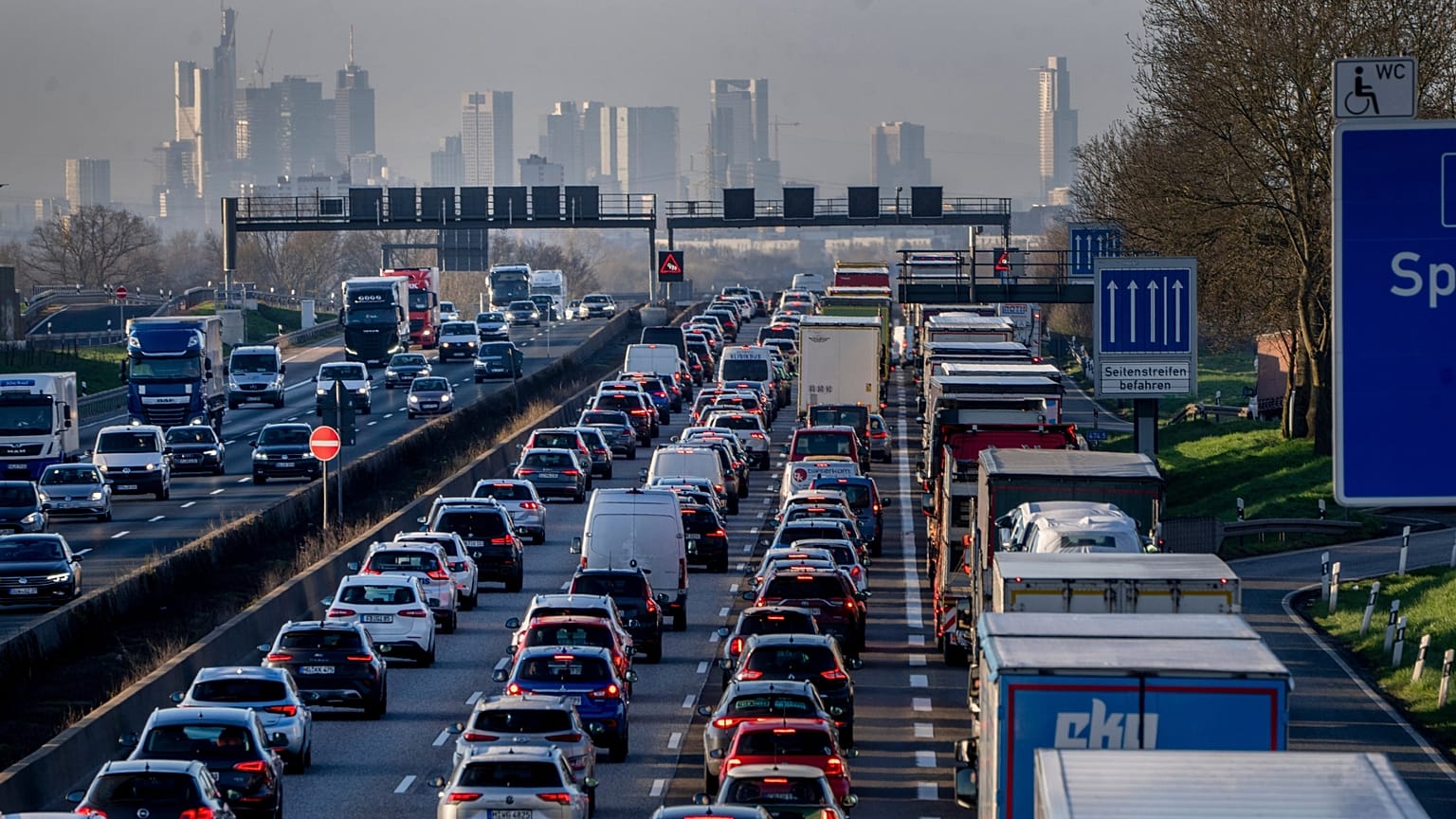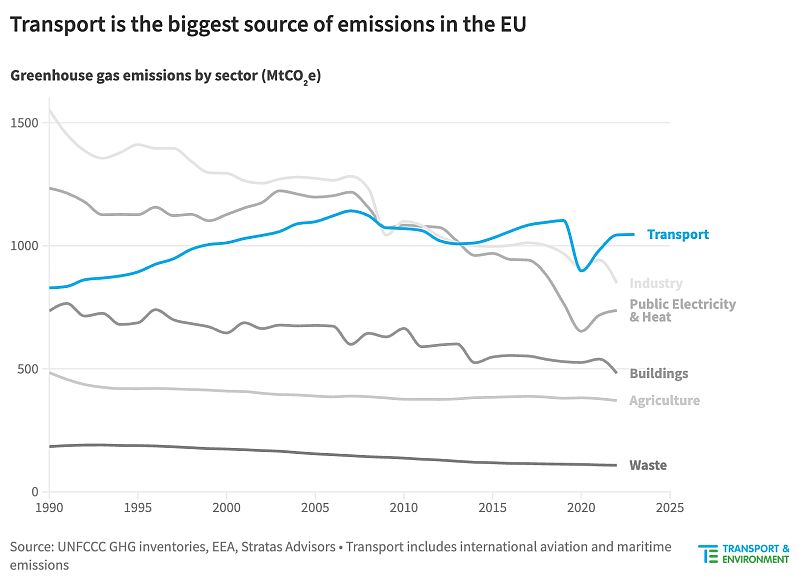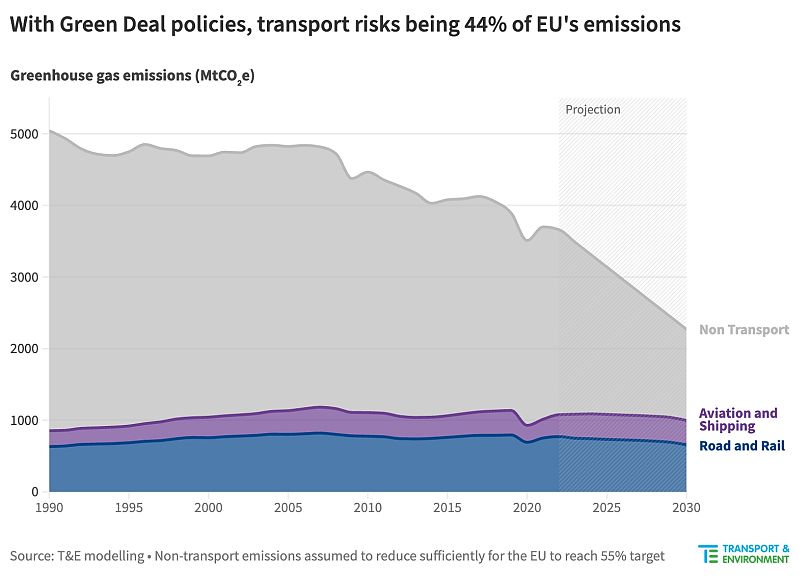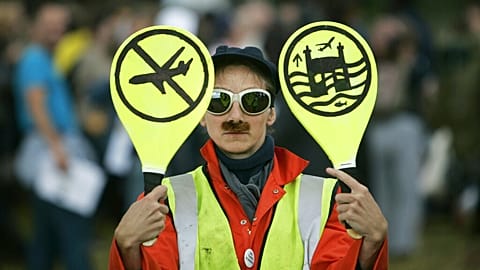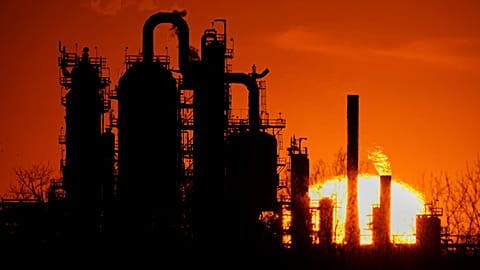Aviation emissions have doubled in the last 30 years - faster than any other transport sector.
Transport alone is set to make up almost half of Europe’s greenhouse gas emissions in 2030, a new analysis from campaign group Transport & Environment (T&E) has found.
Emissions from transport across the continent have increased by more than a quarter since 1990 despite overall emissions being in decline.
Since its peak in 2007, transport has been decarbonising more than three times slower than the rest of the economy, T&E found.
“The good news is transport emissions in Europe have peaked. The bad news is other sectors are decarbonising three times faster,” says William Todts, executive director of T&E.
“In 2030, nearly half of the continent’s emissions will come from mobility, making it the problem child of Europe’s climate efforts. Decarbonising the sector as quickly as possible is now vital if the continent is to reach zero by 2050.”
What are the biggest sources of transport emissions in the EU?
In 2022, transport represented 29 per cent of all EU emissions - almost double what it was in 1990. While non-transport emissions have dropped by 38 per cent over the last 30 years, greenhouse gases from aviation, shipping, road and rail have increased by a quarter.
The analysis also shows that cars burning petrol and diesel make up 40 per cent of transport emissions. T&E says Europe’s dependence on cars has majorly increased since the 1990s, leading to more vehicles on the road and more motorways being built.
Overall road transport - including trucks and cars - accounts for 70 per cent of transport emissions.
While preliminary data indicates that road transport and shipping emissions fell last year, this reduction was undone by the rebound of air travel post-pandemic.
Aviation emissions have doubled in the last 30 years - faster than any other transport sector. And, T&E adds, the additional impact of contrails could potentially triple the climate impact of flying.
Contrails or condensation trails are created when ice crystals form around tiny carbon particles emitted by a plane’s engines. They trap heat in the atmosphere and a 2022 IPCC report found that they could be responsible for more than a third of aviation’s contribution to global warming.
Cars, ships, planes: Why are Europe’s transport emissions staying so high?
Under current policies as part of the European Green Deal, the analysis found that transport’s “runaway” emissions risk becoming 44 per cent of total emissions.
It says they will reduce greenhouse gases from aviation, shipping, road and rail by just 25 per cent compared to 1990 levels by 2040. By 2050, emissions would drop by 62 per cent.
T&E adds that cars, vans and trucks bought between now and the EU’s ban on the sale of petrol and diesel cars in 2035 will still be driving on Europe’s roads for years to come.
Cities are at the forefront of this transition too. Though short journeys make public transport, walking and cycling a more viable option, urban areas are still dominated by cars - despite car ownership having stagnated for 10 years or more in many major European cities.
Several cities, including Brussels, London and Vienna, have even seen ownership decline since the early 2000s.
There is little incentive for shipping companies to improve efficiency and European shipping is projected to reach one-third of total transport emissions by 2050 under current policies. Though Europe is leading the way when it comes to decarbonisation in this sector, existing policies still see ships running on fossil fuels beyond mid-century.
Increased airport capacity is also spurring demand for flights. Aviation is the most climate-intensive means of transport and has seen the fastest growth in emissions since 1990.
How can Europe’s transport emissions be cut?
The campaign group says that with the right policies in place - such as green fuels for aviation and shipping, investment in infrastructure and the electrification of company cars - tailpipe emissions could be almost completely eradicated by the middle of the century.
“Cars trucks and vans can be cheaply electrified with batteries and renewables,” Todts says, “This is now some of the lowest hanging fruit in climate action.”
To decarbonise Europe’s transport, electricity production also needs to be decarbonised. Renewables already accounted for 44 per cent of generation in 2023 but “we need to make sure we do not waste these green electrons,” the analysis says.
It highlights that direct electrification of vehicles is almost four times more efficient than using e-fuels.
“Planes and ships pose a tougher challenge, and require a big effort from fuel suppliers to scale green fuels like e-kerosene and ammonia, and a plan to eliminate aviation contrails.”
Cutting flights is the only way to significantly reduce aviation’s total climate impact this decade, the analysis says.
It is something sustainable aviation fuels can’t achieve in the short term. Hydrogen or battery-electric aircraft are also on the way but their ability to make a dent in emissions is highly dependent on manufacturers’ promises to deliver these planes.
Todts also says putting an end to road and airport expansion would make decarbonisation a lot easier.















